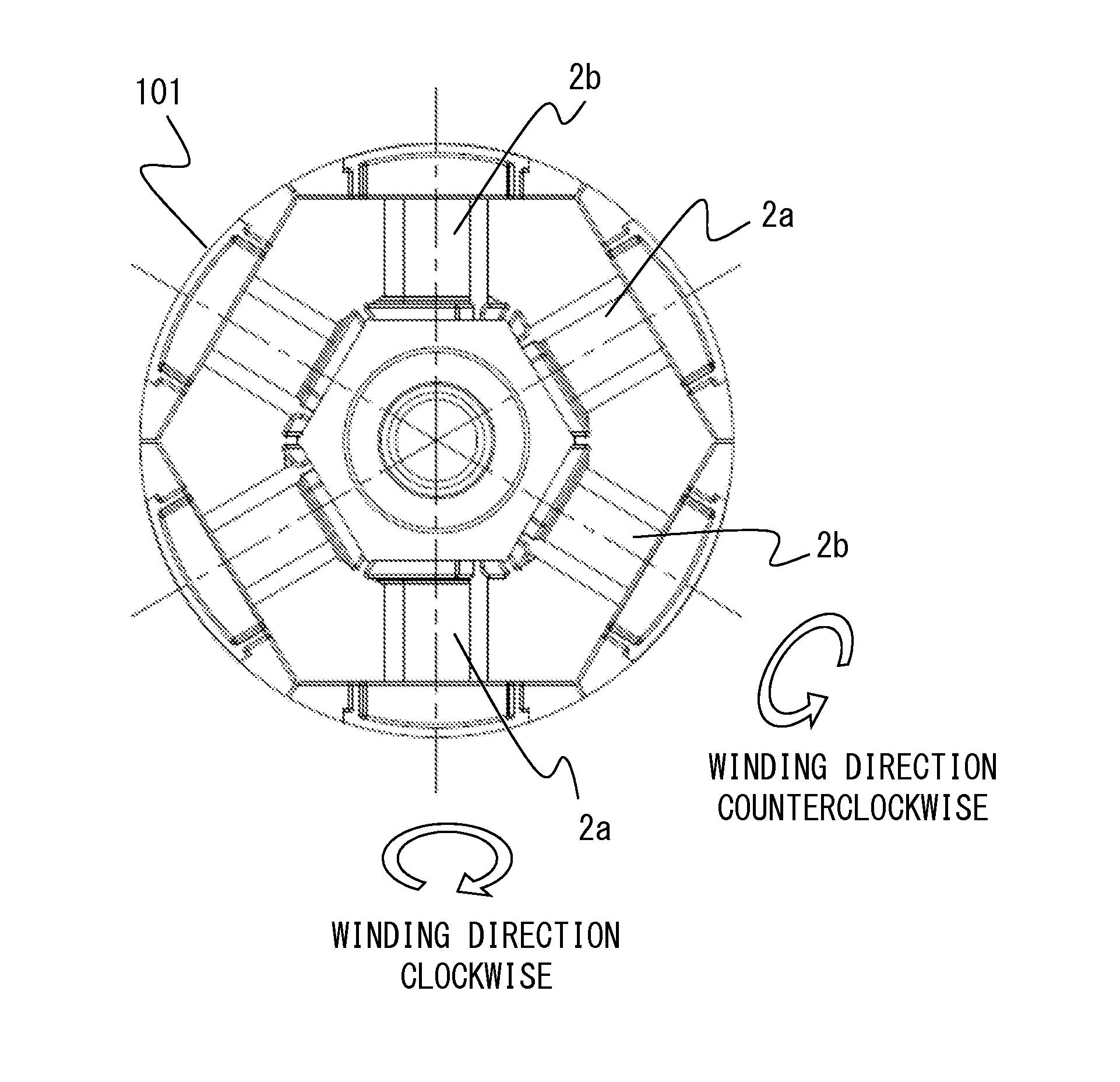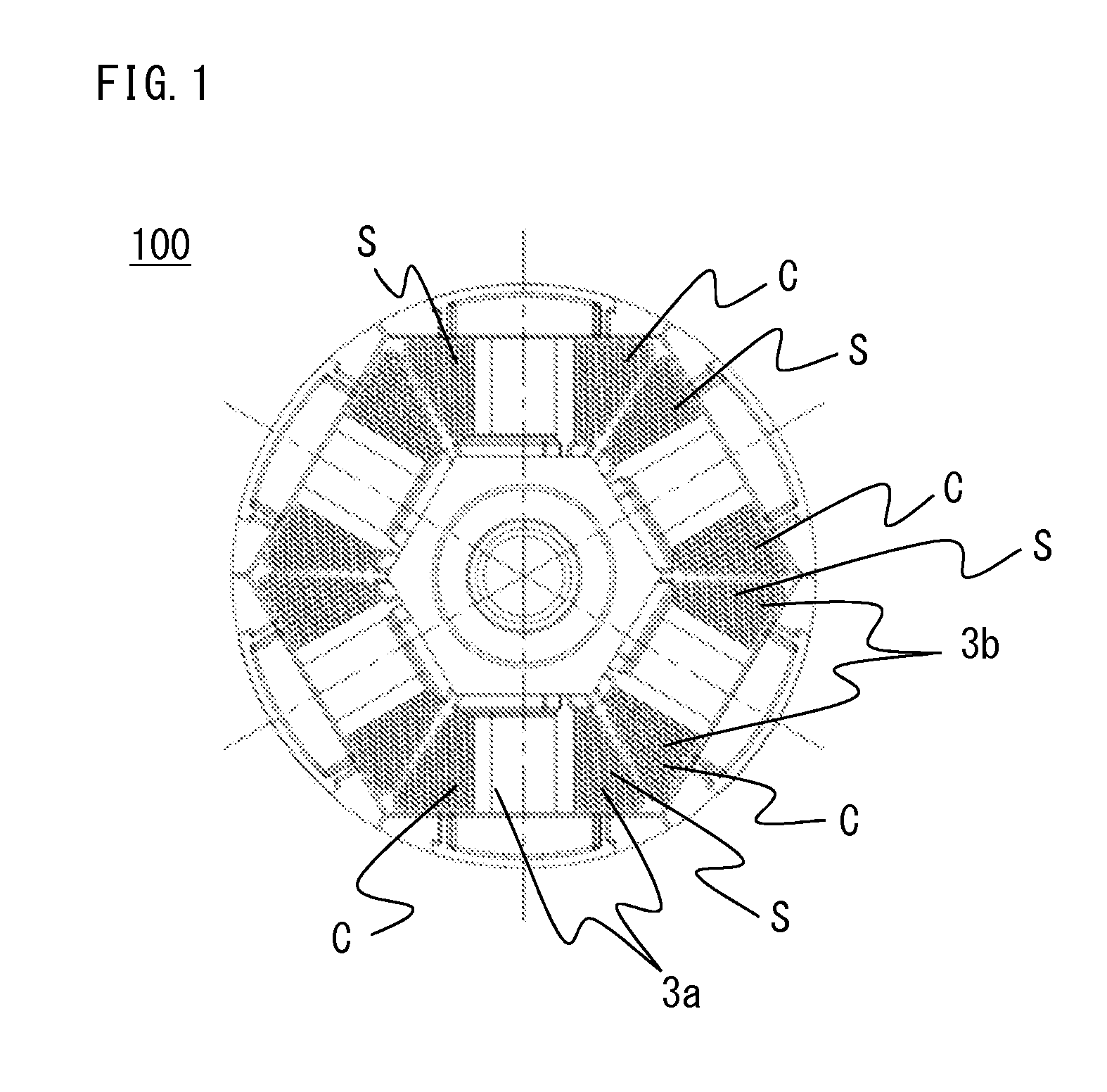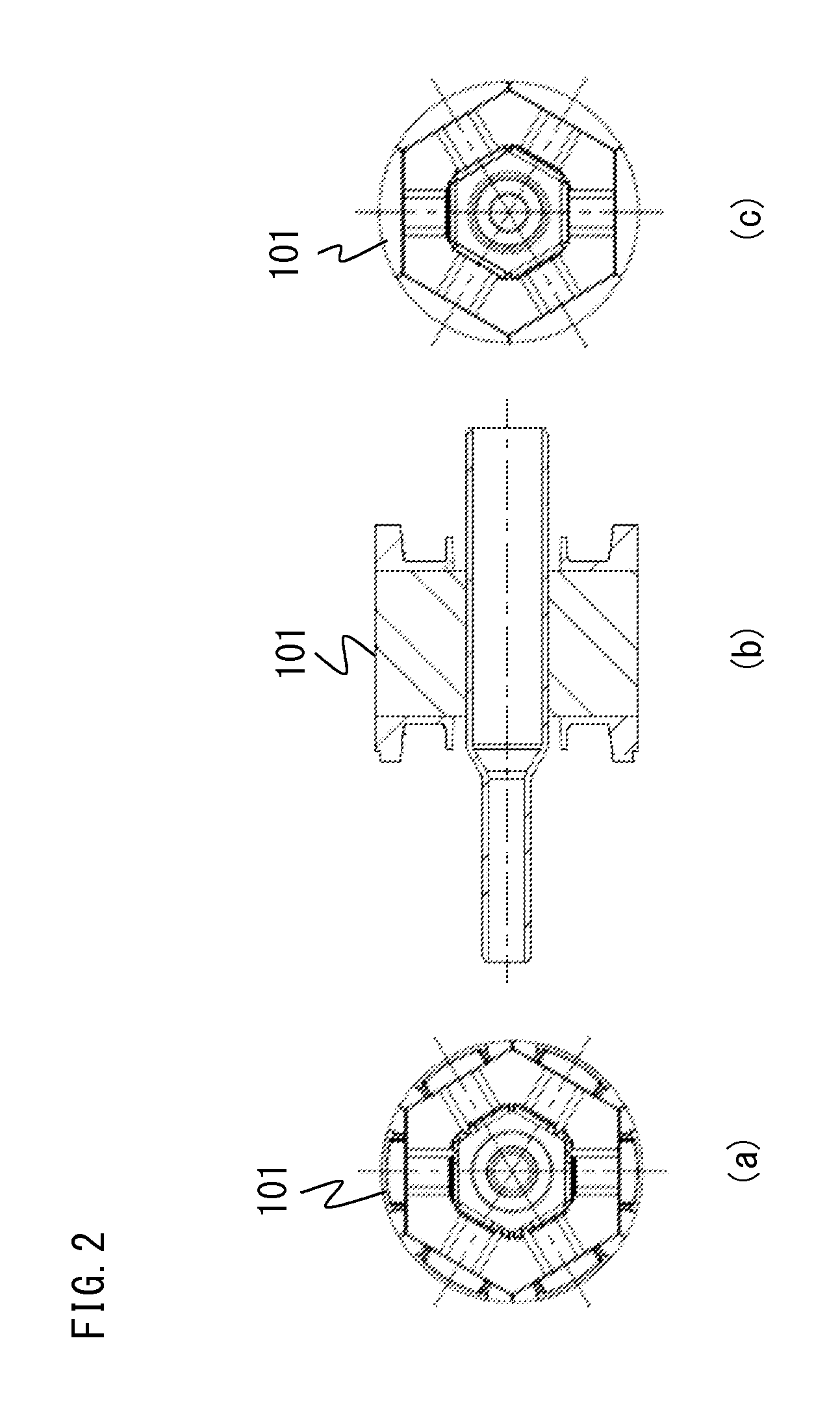Rotating electrical machine armature
a technology for electric machines and armatures, which is applied in the direction of windings, dynamo-electric components, coils, etc., can solve the problems of low space factor of coils, and achieve the effect of accurately winding the first turn, and accurately regular alignmen
- Summary
- Abstract
- Description
- Claims
- Application Information
AI Technical Summary
Benefits of technology
Problems solved by technology
Method used
Image
Examples
embodiment 1
[0045]Hereinafter, an armature for rotary electric machine and an insulator therefor according to embodiment 1 of the present invention will be described with reference to the drawings.
[0046]FIG. 1 is a front view of an armature 100 for rotary electric machine.
[0047]FIG. 2(a) is a front view of a tooth assembly 101 of the armature 100.
[0048]FIG. 2(b) is a sectional view of the tooth assembly 101 of the armature 100.
[0049]FIG. 2(c) is a back view of the tooth assembly 101 of the armature 100.
[0050]FIG. 3 is an enlarged view of FIG. 2(a).
[0051]FIG. 4 is a perspective view of a clockwise-winding insulator 2a attached to a tooth of an iron core 1 as seen from two directions.
[0052]FIG. 6 is a perspective view of a counterclockwise-winding insulator 2b attached to a tooth of the iron core 1 as seen from two directions.
[0053]As shown in FIG. 3, the tooth assembly 101 of the armature 100 which is a rotor is formed by attaching the clockwise-winding insulator 2a and the counterclockwise-wind...
embodiment 2
[0112]Hereinafter, a cross guide provided on an insulator of an armature for rotary electric machine according to embodiment 2 of the present invention will be described with reference to the drawings.
[0113]FIG. 10 is a view showing a major part of a left side surface 222a of a clockwise-winding insulator 202a attached to a tooth of an iron core of the armature for rotary electric machine according to embodiment 2 of the present invention.
[0114]In embodiment 1, the cross guides 25a and 25b have the same width as the outer diameter of the conductive wire 4.
[0115]In the present embodiment, a cross guide 225a is formed such that the width at the end of the left side surface, that is closest to the upper surface of a tooth is the same as the outer diameter of the conductive wire 4, and the shape is gradually tapered as approaching to the lower side, so as to fill a space between the conductive wire 4 to be obliquely wound and an inner flange 223a.
[0116]The first turn of a coil to be ob...
embodiment 3
[0118]Hereinafter, an armature 300 for rotary electric machine according to embodiment 3 of the present invention will be described with reference to the drawings.
[0119]FIG. 11 is a front view of the armature 300 which is a stator.
[0120]The configuration of the present invention is effective to a coil in the case where a cross portion is accurately formed, and this applies whether the type of armature is a rotor or a stator.
[0121]In the case of stator, the configuration is the same as in embodiment 1, except that the first turn of coil starts from the outer circumferential side of each tooth.
[0122]It is noted that as shown in FIGS. 1 and 11, the present invention is applicable to a rotor or a stator of an armature.
[0123]Particularly, in the case of a rotor or a stator having an even number of teeth on which coils formed by a conductive wire being forward wound in a concentrated manner and coils formed by a conductive wire being reversely wound in a concentrated manner are alternatel...
PUM
 Login to View More
Login to View More Abstract
Description
Claims
Application Information
 Login to View More
Login to View More - R&D
- Intellectual Property
- Life Sciences
- Materials
- Tech Scout
- Unparalleled Data Quality
- Higher Quality Content
- 60% Fewer Hallucinations
Browse by: Latest US Patents, China's latest patents, Technical Efficacy Thesaurus, Application Domain, Technology Topic, Popular Technical Reports.
© 2025 PatSnap. All rights reserved.Legal|Privacy policy|Modern Slavery Act Transparency Statement|Sitemap|About US| Contact US: help@patsnap.com



